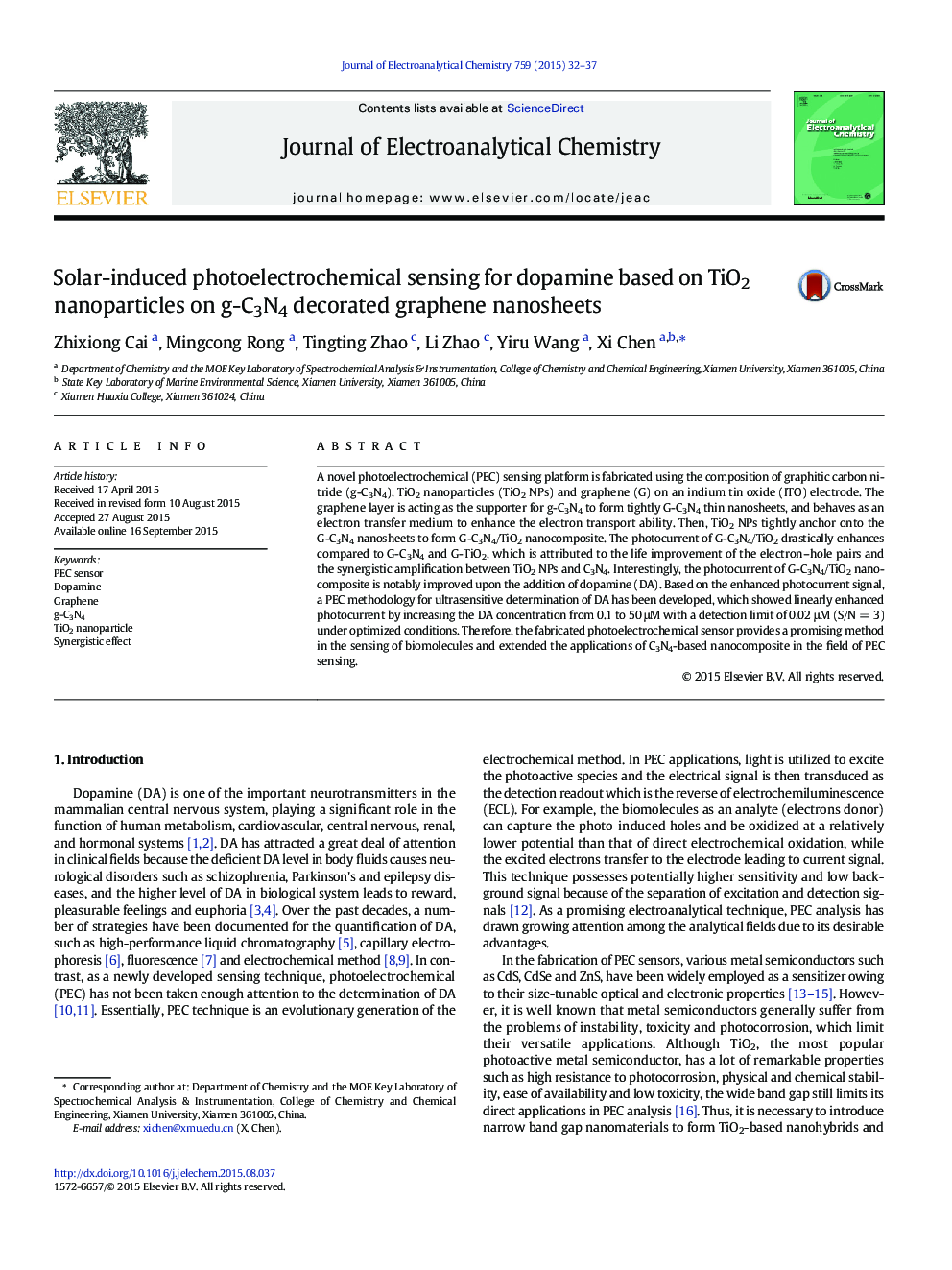| Article ID | Journal | Published Year | Pages | File Type |
|---|---|---|---|---|
| 218129 | Journal of Electroanalytical Chemistry | 2015 | 6 Pages |
•A novel nanomaterial for PEC was fabricated by the combination of graphene, g-C3N4 and TiO2.•A sensitive PEC sensor was developed for the detection of dopamine.•The linear range of the DA concentration was from 0.1 to 50 μM.
A novel photoelectrochemical (PEC) sensing platform is fabricated using the composition of graphitic carbon nitride (g-C3N4), TiO2 nanoparticles (TiO2 NPs) and graphene (G) on an indium tin oxide (ITO) electrode. The graphene layer is acting as the supporter for g-C3N4 to form tightly G-C3N4 thin nanosheets, and behaves as an electron transfer medium to enhance the electron transport ability. Then, TiO2 NPs tightly anchor onto the G-C3N4 nanosheets to form G-C3N4/TiO2 nanocomposite. The photocurrent of G-C3N4/TiO2 drastically enhances compared to G-C3N4 and G-TiO2, which is attributed to the life improvement of the electron–hole pairs and the synergistic amplification between TiO2 NPs and C3N4. Interestingly, the photocurrent of G-C3N4/TiO2 nanocomposite is notably improved upon the addition of dopamine (DA). Based on the enhanced photocurrent signal, a PEC methodology for ultrasensitive determination of DA has been developed, which showed linearly enhanced photocurrent by increasing the DA concentration from 0.1 to 50 μM with a detection limit of 0.02 μM (S/N = 3) under optimized conditions. Therefore, the fabricated photoelectrochemical sensor provides a promising method in the sensing of biomolecules and extended the applications of C3N4-based nanocomposite in the field of PEC sensing.
